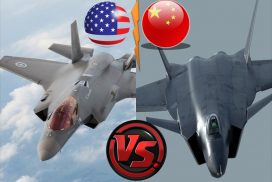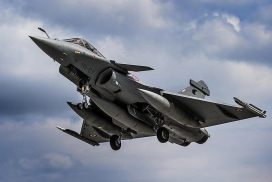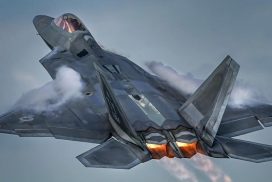After World War II, the Mexican Air Force had a large number of combat aircraft like the Beechcraft AT-11 Kansan, North American Aviation B-25 Mitchell’s, North American Aviation A/T-6 Texans, Douglas A-24B Dauntless, and the Republic P-47D Thunderbolts that were received from the United States during the war. In 1947, the Mexican Air Force had gotten a few more war surplus combat aircraft like the P-47D and A-24B for example when Mexico signed the Rio Treaty. However, as the 1950’s rolled in, the Mexican Air Force combat fleet was falling in a state of disrepair and obsolescent with only a very few F-47D’s and A-24B’s were only operational at the time and relying on the A/T-6 Texans which FAM still had a large numbers of the type. Despite this, SEDENA did a small recovery act to bring back some aircraft into service such as the A-24B, T-6 Texan, F-47, and other aircraft in 1956, but the B-25’s were retired from service.
In 1958, FAM bought a few North American Aviation T-28 Trojans to replace some older aircraft like the A-24B and the older model T-6 trainers in both trainer and attack roles. While that same year, the Mexican Air Force hierarchy was becoming increasing concern with their aging or grounded fleet of aircraft and helicopters like the P-47D that slated to retire that same year.
FAM officials wanted to increase the budget, while at the same time; there were talks about separating FAM from the Mexican Army control and becoming an independent branch. Even though SEDENA (which is the Mexican Army and Air Force) agreed to increase budget, but didn’t agree on a separate branch though. Another problem is that the Mexican government didn’t see any reason to spend any money on the air force let alone the military since they see no threat from other nations and considered them “Brothers”. Nonetheless, this mentality was soon about to change in no time.
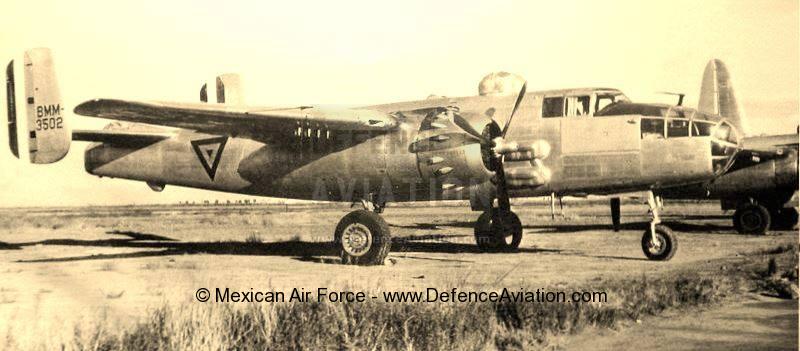
A rare photo of North American B-25J Mitchell in which FAM gotten three of them in World War II, but never saw action though in the war though. The B-25’s did continue to serve with the Mexican Air Force until the mid-1950’s due to its obsolescent and lack of spare parts. (Photo & Credits goes to FAM or Mexican Air Force)
Wake Up Call: 1958-1959
On December 31, 1958, two P-51D Mustangs of the Guatemalan Air Force attacked a few Mexican fishing boats that were twelve miles off of Mexico. Three Mexican fishermen were killed and fourteen others were injured from the attack in which they were arrested by interrogated by Guatemalan officials. The area though where the fishing boats was highly disputed between Mexico and Guatemala for a last few years definitely after Mexico extended their coastline from three miles to twelve miles. Other issues that the Guatemalan President Miguel Ydigoras Fuentes also had disputes with Mexico over illegal logging, weapons smuggling, and even claims that Mexico was working with Belize to attack Guatemala. The attack wasn’t good news at all for Mexico and the newly elected Mexican President Adolfo Lopez Mateos who put the Mexican military on high alert.
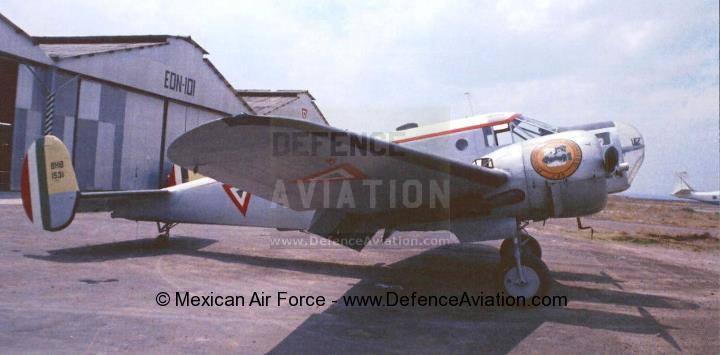
Beechcraft AT-11 Kansan which served as a light bomber and small transport aircraft for FAM. The Kansan was put on alert status for a possible retaliatory strike against Guatemala in 1959. (Photo & Credits goes to FAM or Mexican Air Force)
Maj. General Alfonso Cruz Rivera of the Mexican Air Force was planning to attack La Aurora Air Base near Guatemala City, Guatemala which housed the Guatemalan Air Force P-51D Mustangs and other military aircraft based there. The attack squadron would be using three surviving P-47D Thunderbolts for air superiority, T-28 Trojans and AT-6 Texans for attack missions, along with a C-47 Dakota which acted as airborne command post to watch over the attack group. In 1959, the P-47D’s, AT-6’s, and T-28’s were loaded with machine guns, rockets, and napalm bombs with support from the C-47 and took off from Tuxlafor the attack mission against La Aurora air base in Guatemala City.
Once they’ve crossed into Guatemalan airspace, the strike force dropped to eighty feet to avoid being spotted by Guatemalan Air Force radar systems. The Mexican Air Force strike package was very close to La Aurora and were about to attack the base, but before they could attack the base, a message came in from the C-47 via FAM officials to strike force to abort the mission. This wasn’t welcoming news for the strike force and they had to turn back to base in Mexico in disappointment. Nevertheless, the Mexican warplanes did patrol the border in case the Guatemalan Air Force did try a similar attack on Mexican bases, cities, or towns. FAM aircraft also did “mock” attack runs on Guatemalan Army troops as a warning too. In August 1959, the dispute came to a close with Mexican and Guatemalan political officials working with ICC over the exclusive economic zone or EEZ and other issues which started the dispute anyway. Despite the fact, the dispute showed a lot of holes for the Mexican Air Force definitely when it came to obsolete or grounded aircraft due to lack of spares.
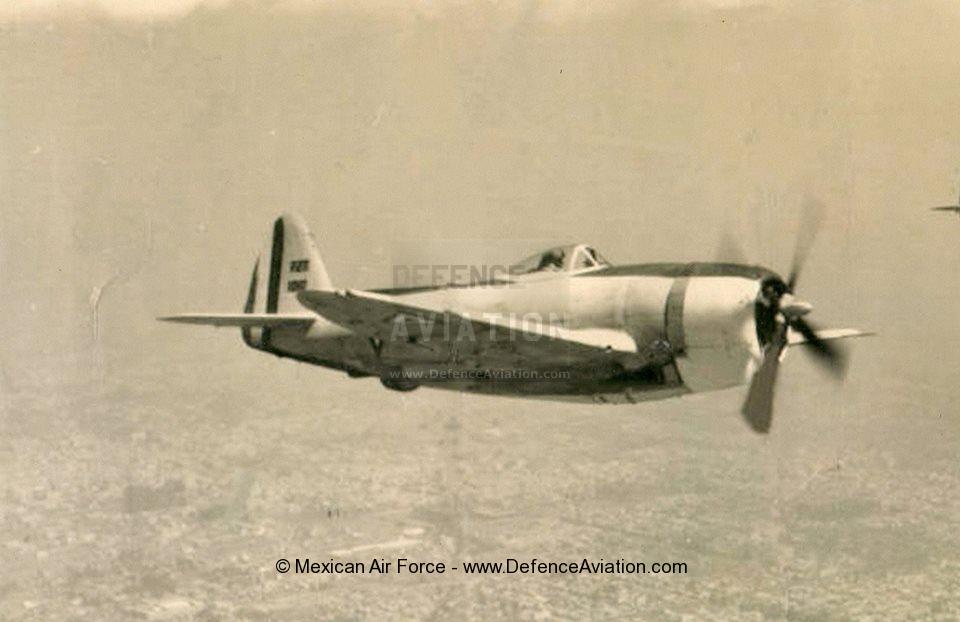
One of the most famous and well known fighter planes to serve with the Mexican Air Force in World War II. The Republic P-47D Thunderbolts served with the 201st Fighter Squadron in Mexican Expeditionary Air Force in which they attack a number of Japanese targets in Philippines and Taiwan during the war. FAM received over 70 P-47D Thunderbolts during and after the war in which they served until 1959. (Photo & Credits goes to FAM or Mexican Air Force)
Lessons Learned: 1960-1973
In 1957, Maj. General Alfonso Cruz Rivera was doing some touring of USAF, RCAF, and other Latin American countries air force bases and was evaluating a number of jet fighters and trainers most nobly the Lockheed AT-33A Shooting Star. However, they couldn’t afford these new fighters and trainers because budget issues and a lack of threats from other nations. But that was going to change after the Mexican-Guatemalan dispute in 1958-1959 in which the Mexican President Adolfo Lopez Mateos increase the budget for the Mexican military to afford newer military equipment like jet fighters. Maj. General Alfonso Cruz Rivera also brought in Roberto Fierro and Luis Farell Cubillas who was a legendary Mexican Air Force pilot who fought in a few Mexican internal wars like the Cristero War and the Yaqui Campaign during the late-1920’s and early-1930’s and trained pilots during those conflicts and World War II.

Due to the help from the Farell and Ferrio, FAM bought fifteen ex-RCAF de Havilland Vampire MK.3 fighters that were delivered in 1960 which were based in Santa Lucia with the 200th Fighter Squadron. The Vampire became the first fighter jet to enter service with the Mexican Air Force and was also joined by the Lockheed AT-33A Shooting Stars. (Photo & Credit goes to FAM or Mexican Air Force)
Both Farell and Fierro spearheaded the purchase of twelve ex-Royal Canadian Air Force de Havilland Vampire MK.3 single seat fighters and three Vampire T.MK.11 two-seat trainers and fifteen former USAF Lockheed AT-33A Shooting Stars in 1961. This right here gave FAM a massive boost in airpower and replaced their obsolete and retired aircraft like the P-47D Thunderbolt for example. The new jet fighters were shown during the Mexican Independence Day Parade in 1962 in which the crowd were cheering and awed by the performance.
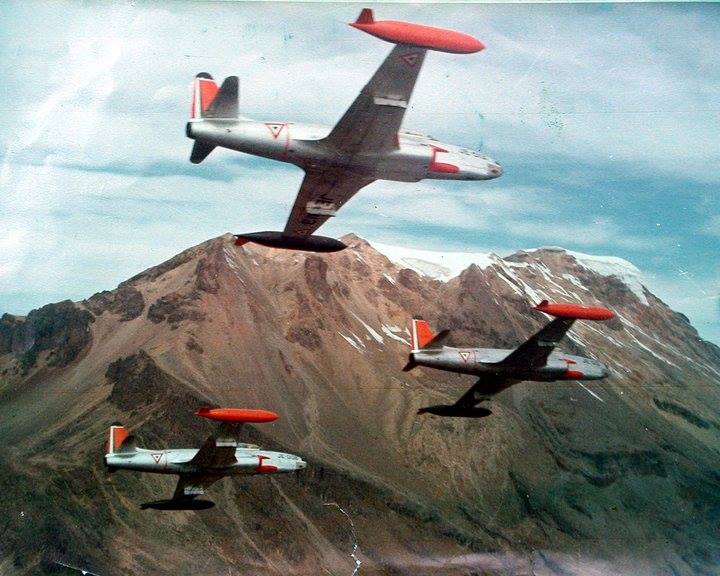
Three Mexican Air Force Lockheed AT-33A Shooting Stars flying in formation during a training mission near a mountain range in 1972. The Shooting Star alongside the Vampire MK.3 was bought in 1960 right after the Mexican/Guatemalan Crisis in 1959 and entered service 1961. (Photo & Credit goes to FAM or Mexican Air Force)
During the 1960’s, a number of peasants and leftist rebels in southern and even some northern parts of Mexico were attacked by Mexican Air Force attack aircraft such as the T-28 Trojan which was part of the Mexico’s “Dirty War” campaign by the Mexican government and military. However, those reports are so far are unclear and disputed, but neither was denied or confirmed though by Mexican government at the time. Around the same period, FAM increased their combat aircraft fleet with additional AT-33A’s and T-28’s which would base in Mexico City, Merida, Ixtepec, Tuxtla Gutiérrez, and other bases in Mexico.
In the late-1960’s, the Mexican military once again headed into a slowdown period due to the economic downturn going on in the country in which fewer equipment and aircraft were bought during the time. Even despite slowdown, a deal was sign for sixteen IAI 201 Arava multirole transports from Israel which also had COIN capability in 1973.
The Golden Age: 1974-1980
With problems going on in the Middle East definitely after the Yom Kippur War in 1973 and oil embargoes placed Arab nations, Mexico started to boost their oil production to the United States, Europe, and other nations around the world. This turn right there helped boost the Mexican economy along with modernization plans in which included the Mexican military too. While the Mexican Air Force was mostly getting their military aircraft from the United States, this was about to change when FAM started to buy a number of trainers, transports, and helicopters from France, Israel, Switzerland, and the United Kingdom.
Around the early part of the 1970’s, FAM retired their obsolete de Havilland Vampires from service in which left the AT-33A Shooting Stars as their only jet fighter/trainer in service. SEDENA initiated a requirement for a new supersonic fighter and interceptor for the Mexican Air Force to protect Mexican airspace from external threats and to supplement their AT-33A fleet. In mid-1970’s, FAM bought another batch unknown numbers of AT-33A’s to make up the shortfall from their retired Vampires while at the same time, Mexico was looking at new fighters. The news fighters that FAM was interested were the French made Dassault Mirage F-1, Israeli made Israel Aircraft Industries or IAI Kfir C.2 and the U.S made Northrop F-5E/F Tiger II which fit the bill for their air force. So, in 1978, the Mexican Air Force chose the IAI Kfir C.2 in which they’ve ordered twenty-six Kfir C.2/TC.2’s with a proposed license deal to make the Kfir in Mexico and possibly for other foreign air forces.

One of the biggest buys in the “Golden Age” of Mexican military procurement was the Pilatus PC-7 Turbo Trainer. Totaling up to 88 airframes, the PC-7 began its service with FAM in advanced training and COIN roles, multiplied into what it became a “Jack of all trades” aircraft in its later years. (Photo & Credit goes to Mariano Garcia Rodriguez)
Later that year, FAM ordered twelve Pilatus PC-7 Turbo Trainers from Switzerland for training and counter-insurgency or COIN role. In 1979, the Carter Administration vetoed the Mexican Kfir deal over the use of the General Electric J79 engines which the United States considered “high tech” in which a few American allies at the time were allowed access to the engine. Despite these hurdles, FAM decided to order the twenty-four Northrop F-5E/F Tiger II for their service in which they will based in Santa Lucia Air Base near Mexico City for air defense and interception roles. In the early-1980, SEDENA ordered another seventy-six PC-7 Turbo Trainers (which was the largest PC-7 order at the time) to finally replace their World War II vintage AT-6 Texans and the T-28 Trojans which were obsolete along with being grounded most of the time due to lack of spare parts.
During the same period, the Mexican Air Force was interested in the new Dassault Alpha Jet and Vought LTV was also offering the A-7 Corsair II to Mexico for attack and strike roles. Nevertheless, the golden age was coming to a close.

An FAM F-5E Tiger II (nu. 4507) of the 401st Air Defense Squadron alongside with an EMB-145MP (P-99) of the Aerial Surveillance Squadron in the background. After the cancellation of the IAI Kfir C.2 due to political pressure, the Mexican Air Force decided to go with the Northrop F-5E/F Tiger II’s in which 24 (later dropped down to 12 due budget constraints) were ordered in 1981. The Tiger II’s brought the Mexican Air Force into the supersonic age. (Photo & Credit goes to Mariano Garcia Rodriguez)
Slow Down: 1981-1993
In 1981, the Mexican economy once again fell into recession in which a lot projects in Mexico were slow or canceled altogether. The Mexican military gotten hit the worst in which a number of military equipment and aircraft from foreign or indigenous were cutback or canceled altogether too. The Mexican Air Force was one of these branches that gotten hit hard by the recession in which they dropped their proposals for ordering the A-7 Corsair II, Alpha Jet, and other aircraft that they were looking to buy and order.
Also, the Northrop F-5 deal was also cut from twenty-four down to twelve because of the budget shortfall from the economy. However, some of the FAM purchases did made it through the budget shortfall unscathed like the large order of PC-7’s for example which were also needed badly though. Nonetheless, the first F-5 fighters landed at Santa Lucia Air Base in 1982 in which brought the Mexican Air Force to the supersonic era! In mid-1980’s, FAM was finally phasing out last of their AT-6’s and T-28’s and the new PC-7’s were taking they’re places. While some of the PC-7’s are use in pure training role and based at Zapopan, the others are use in training, COIN, and somewhat interception roles.
Nevertheless, in 1986, FAM was looking to buy 18 Northrop F-20 Tigersharks to complement their F-5E/F fleet. But sadly it never came to fruition mostly due to economic and political reasoning. In 1988, Mexican Air Force ordered their last batch of unknown number of AT-33A’s from the United States to help out with advanced training, attack, and interception roles for the F-5 fleet. In the early part of the 1990’s, the Mexican economy was slowly getting better, but another threat started too loomed from within Mexico.

Two Fuerza Aerea Mexicana F-5E Tigers part of the 401st Air Defense Squadron flying in formation somewhere in Mexico in 1990. (Photo & Credit goes to FAM or Mexican Air Force)
Chiapas War: 1994
While Mexico was recovery from the worst financial crisis in history, Mexican President Carlos Salinas de Gortari along with U.S President George W. Bush and Canadian Prime Minister Brian Mulroney signed NAFTA in 1992. However, NAFTA was delayed due to both U.S and Canadian elections in which the new U.S President Bill Clinton and Prime Minister Jean Chretien approved NAFTA in 1994. While the NAFTA was very much controversial in United States and Canada, it was super hated in Mexico in which Article 27 in the Mexican Constitution which protected Mexican land owners from businesses and private enterprises was removed because it didn’t fit into NAFTA proposals.
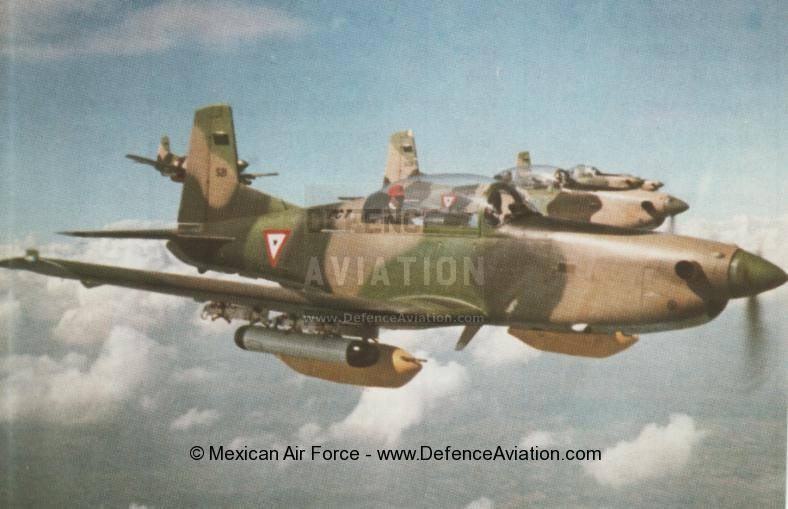
While this picture was taken sometime in the 1980’s, these same PC-7’s armed with rocket pods and machine gun pods which were used in the controversial 12 day conflict in Chiapas in 1994. The PC-7’s along with helicopter gunships like the MD-530, UH-60A Blackhawk, Bell 212 Huey, and reports of the IAI Arava were used to attack EZLN rebel strongholds in Chiapas and providing close air support to the Mexican Army on the ground during the conflict. (Photos & Credits goes to FAM or Mexican Air Force)
The first day it was signed into law, a group called the Zapatista Army of National Liberation or better known as EZLN which is left wing group based out of Chiapas who supports the Mexican and Indigenous Indian rights and their lands took over several towns and block entrances from state and federal officials. President Salinas ordered the Mexican military and Federal units into Chiapas in which troops, armored vehicles, and helicopters were sent there to quell the violence.
While the Chiapas Conflict was regarded as the “Mexico’s Helicopter War”, it wasn’t long before the Mexican Air Force started to use the PC-7 and also reports that the IAI Arava in attack roles. The PC-7’s, Aravas, along with MD-530’s and UH-60’s which were purchase from the United States was used close air support (CAS) in protecting the troops and attack EZLN positions in the mountains and other areas around Chiapas with rockets, gun pods, and bombs. Other aircraft like the AT-33A’s and the F-5E’s were also deployed to Chiapas, but didn’t see any combat though. The conflict lasted till January 12th when the ceasefire was sign along with EZLN rebels being defeated too.
While this conflict was getting world attention, it wasn’t long before some nations put an embargo on Mexico on military weapon systems. Switzerland who has been Mexico big supplier of military weapons put an embargo on PC-7 parts and even canceled the order for forty-eight new PC-9’s that FAM placed a year earlier after learning that their PC-7’s that they sold Mexico in the late-1970’s were being used to attack rebels. This embargo started to slowly hurt the Mexican Air Force PC-7 fleet in which some of them were withdrawn and cannibalized for spares.
Proposals that went Nowhere: 1995-2005
After the Chiapas conflict, SEDENA and SEMAR started to more attention on helicopters, transport aircraft, and small reconnaissance aircraft which became more important for the Mexican military. Even despite the successful use of the PC-7’s and Aravas during the conflict, but plans to acquire additional combat aircraft have taken a backseat. While this seem like the case, but it wasn’t the case since FAM was looking at replacing their older AT-33A Shooting Stars and complement their F-5E/F Tiger II’s. FAM started to show interest in the Argentine made FMA IA-63 Pampa advanced trainer and light combat aircraft, but they were ordered for reasons unknown. After the Chiapas War, SEDENA found some nations like Switzerland and the United States placing embargoes and were denied certain equipment and so they’ve decided to look towards the Eastern Bloc nations like Russia and Ukraine for military equipment which cheaper and less political hassle compared to their Western counterparts.

Two Northrop F-5E Tiger II’s of the 401st Air Defense Squadron flying over Mexico City. As of now, the F-5E/F Tiger II’s are the Mexican Air Force sole fighter and attack jet since the AT-33A Shooting Stars were withdrawn from service in 2008. (Photo & Credit goes to Jose Antonio Quevedo)
So in 1998, Mexico was showing interest in the Aero L-39 Albatros, Mikoyan MiG-29 Fulcrum, and the Sukhoi Su-25 Frogfoot from Ukraine and Russia, but this to fell through due to cost and maintainability of the aircraft. Later that year, Switzerland removed the arms embargo in which Mexico started to get spare parts for their PC-7’s and PC-6 aircraft. As the new millennium along with a new Mexican President Vicente Fox who just entered office in 2000, the military was getting another major overhaul. In 2002, reports that Mexico was looking buy the MiG-29 and Su-25, but once again, nothing conclusive came out of these reports either. Additional reports coming from a few defense sites and military forums a year later claimed that the Mexican Air Force was going to retire their F-5 fleet because they see no use for them. However, those reports were denied by SEDENA calling them false and the F-5 fleet was very much important for the security of Mexico.
Around 2004, United States offered Mexico ten ex-USAF F-16A and two F-16B Block 15 MLU for $1.2 billion dollars that included training, spares, and weapons such as AIM-9 Sidewinder, AGM-65 Maverick, and precision guided munitions like the GBU-10/12 LGBs as an F-5 replacement. Granting the deal looked good on paper for FAM, nonetheless it was later rejected because the F-16’s were considered old and the price for them was too expensive. Around this period, some of the air force hierarchy went to Saudi Arabia, Switzerland, and other nations to look at buying additional F-5E/F Tiger II are to supplement their existing Tiger II’s along with plans to upgrade them with inflight refueling probes, radar, and weapon systems. However, apart from these proposals, none of them went forward for a number of reasons.
Enter the Texan II’s: 2006-2012
At the same time that the Fuerza Aerea Mexicana was looking for a new combat aircraft, they were also looking at a new advanced trainers and attack aircraft to replace the older AT-33A’s and the PC-7’s that were and are in service. The air force was looking at other trainers like the Embraer EMB-314 Super Tucano, Hawker Beechcraft T-6C Texan II, KAI KT-1 Woongbi, and the Pilatus PC-9M. In September of 2006, FAM received two Pilatus PC-9M’s in which they’ve landed at Santa Lucia Air Base from Switzerland. Apart from that PC-9M order that year, another majorreport hit the defense sites and military forums that the United States offered the Mexican Air Force forty ex-U.S Navy McDonnell Douglas (now Boeing) F/A-18A/B Hornets as a replacement for the F-5 fleet. While the Hornet proposal was talked about, another offer from South Korea which they’ve offered 40 ex-RoKAF F-5A/B Freedom Fighters for a low price of $100 for each aircraft, but it was turned down due obsolescent of the aircraft.
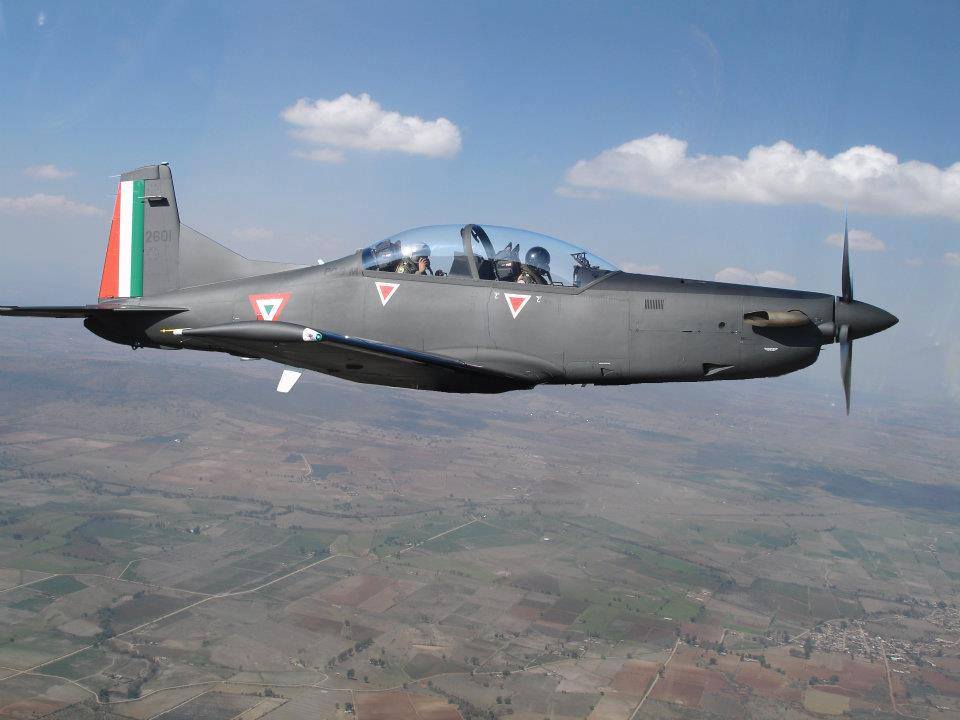
The Pilatus PC-9M beat out the Super Tucano, PC-21, and the KT-1 for FAM’s new advanced trainer/COIN competition in 2005. However, after a few years testing them out, FAM found the PC-9M didn’t meet their criteria and were later replaced by the T-6C+ Texan II a few years later. (Photos & Credits goes to FAM or Mexican Air Force)
Nevertheless, the Hornet proposal never went anywhere though with some questioning the report was even real at all since the U.S never confirmed offer and FAM once again was back at square one looking for a new combat aircraft. Even though the Freedom Fighter and Hornet deals was a bust, another report coming out of a Russian newspaper in 2006 reported that Rosoboronexport was in talks with Mexico about acquiring some MiG-29’s, but it was later denounced as false too.
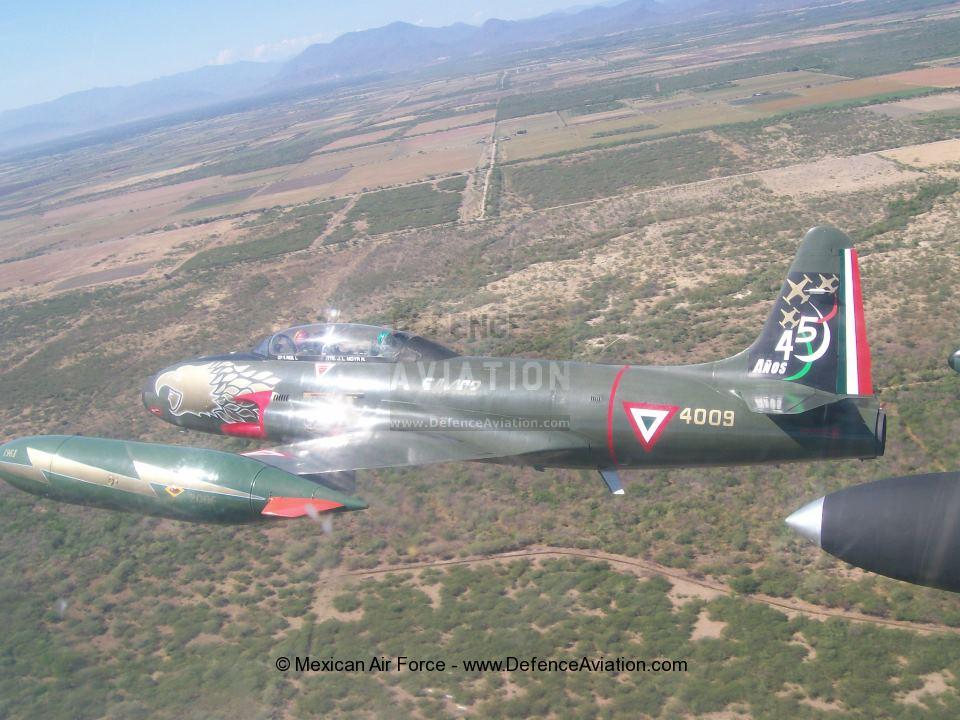
While it was in its twilights of it service, This AT-33A is flying with in its 45th Anniversary colors somewhere in Mexico. The Lockheed AT-33A Shooting Stars were finally phase out of service in 2008 with its former roles were handed off to the PC-7 Turbo Trainer. (Photo & Credits goes to FAM or Mexican Air Force)
In 2007, Mexican Air Force general Guillermo Galvan Galvan requested additional funding for either the F-16’s and F/A-18’s along with additional AEW&C, air defense systems, and radar systems from the Mexican Congress and Senate since the F-5 fleet, radars, and air defense systems were considered inadequate or obsolete. While despite the pleas from the General Galvan, the Mexican government and SEDENA had other priorities and apart from that, the military was putting most of its focus on fighting the drug cartels.
Nonetheless, the SEDENA did approved a modest upgrade for the F-5 fleet which was fitted with AN/APQ-159(V)5 radar system which is an improvement over the older AN/APQ-139 radar system. Finally, in 2008, the Mexican Air Force bid farewell to the AT-33A Shooting Star after serving 47 years in service. FAM also initiated Project SIVA (Integrated Air-Surveillance System) in 2010 in which started a In 2011, the Mexican Air Force chosen the Hawker Beechcraft (Raytheon) T-6C+ Texan II over the Embraer EMB-314 Super Tucano and the Pilatus PC-9M advanced trainers as a replacement for their older PC-7 Turbo Trainers. SEDENA has plans to acquire over 60-70 AT-6 and T-6C+ Texan II’s in both training role and ground attack roles before the end of the decade.
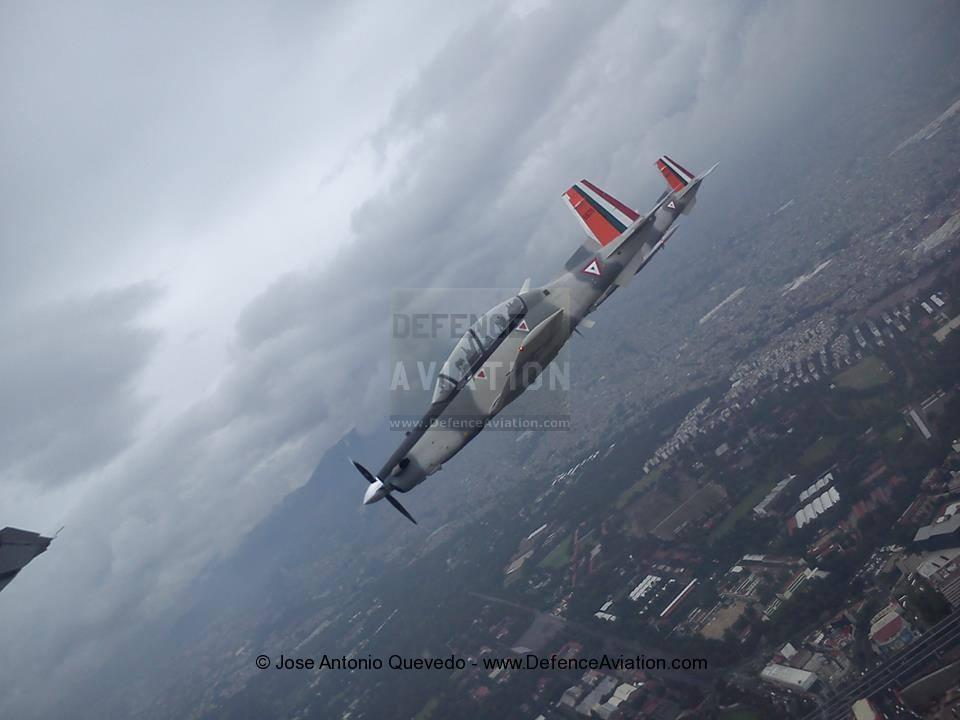
FAM’s Hawker Beechcraft T-6C+ Texan II flying over Mexico City during the Sept 16th Mexico’s Independence Day Parade in 2013. The T-6C+ along with the future AT-6 Texan II will be replacing the older PC-7’s from service later this decade. (Photo & Credit goes to Jose Antonio Quevedo)


